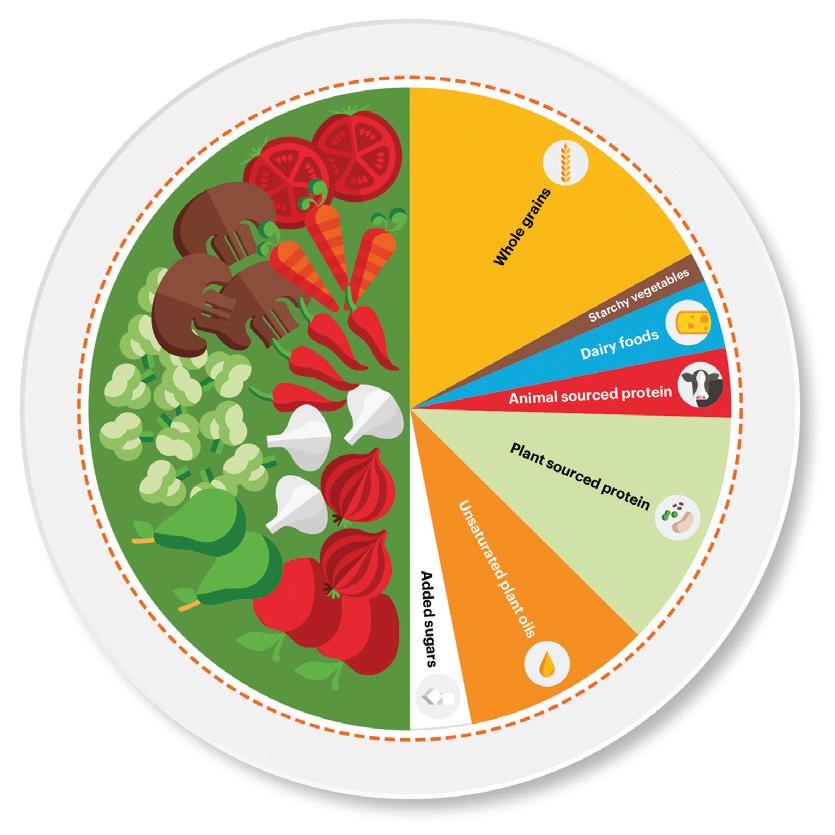FrankTalk
What Will We Eat? by Frank McCann, CSJP-A
by Benard Kimani
by Sophie Mbugua
We are reminded daily about the growing threat of disciplines, including human health, agriculture, climate change, but we hear much less often about political science and environmental sustainability from the radical revolution required in our global food 16 different countries. system. What we eat affects our planet’s health. They had two particular targets and in January We need to reduce greenhouse gases (GHGs) of 2019 the EAT-Lancet Commission published their for the planet to survive, and 26% of those gases report outlining how to achieve them. come from food production and distribution to feed the seven billion inhabitants of Earth.1 Cutting GHGs TARGET 1: A Healthy Diet is complicated by the fact that we need to increase “Provide a food plan for a healthy diet to feed 10 billion global food production by 50% in order to meet by the year 2050. Healthy diets have an optimal caloric the growing population expected to reach 10 billion intake and consist largely of a diversity of plant-based persons by the year 2050.2 Per capital food production foods, low amounts of animal source foods, contain increased by ten between 1993 and 2013.3 Much of unsaturated rather than saturated fats, and limited this growth was from expansion of arable land and amounts of refined grains, highly processed foods and by the spread of monoculture farming, which while added sugars.”5 considered “efficient,” leads to soil degradation and loss of biodiversity. We cannot afford to continue TARGET 2: Sustainable Food Production cutting forests to create more land for food or burning “The Commission proposes boundaries that global the Amazon to provide more grazing land for cattle. food production should stay within to decrease the Livestock production uses 77% of agricultural risk of irreversible and potentially catastrophic shifts in land for feed production, pasture and grazing. and the Earth system.”6 provides only 33 percent of dietary protein.4 Using so much arable land for so little protein is demonstrably The EAT-Lancet Commission Report includes inefficient. Doctors also say that eating meats at several graphs to understand how diets globally, in the rate consumed in the US, Australia and most North America, Africa and Asia exceed the planetary of Europe is both environmentally boundaries set forth in the report. The North American unsustainable and unhealthy diet (shown at the top of page 23) shows what for consumers. portions of our diets exceed the planetary There is an urgent boundaries indicated by the dotted orange need to move toward circle. a plant-based diet The chart clearly shows that North with much smaller, Americans consume significantly more if any, meat-based eggs, poultry, starchy vegetables and proteins. EAT dairy than is healthy or sustainable. A (eatforum.org), South Asian diet by contrast, although a nonprofit out more balanced than a North American of Stockholm diet, falls short in all categories of food dedicated to needed for a healthy diet except for transforming the starchy vegetables. global food system, Most people who eat meat and partnered with the fish are not willing to give up all of it. The medical journal The new “plate” the EAT-Lancet Commission Lancet (thelancet.com). suggests involves one-half of the plate filled Together they gathered with fruits and vegetables. The balance of a 2,500 37 scientists of multiple PLANETARY HEALTH PLATE calorie a day diet would include portions of whole
22
LIVING PEACE














